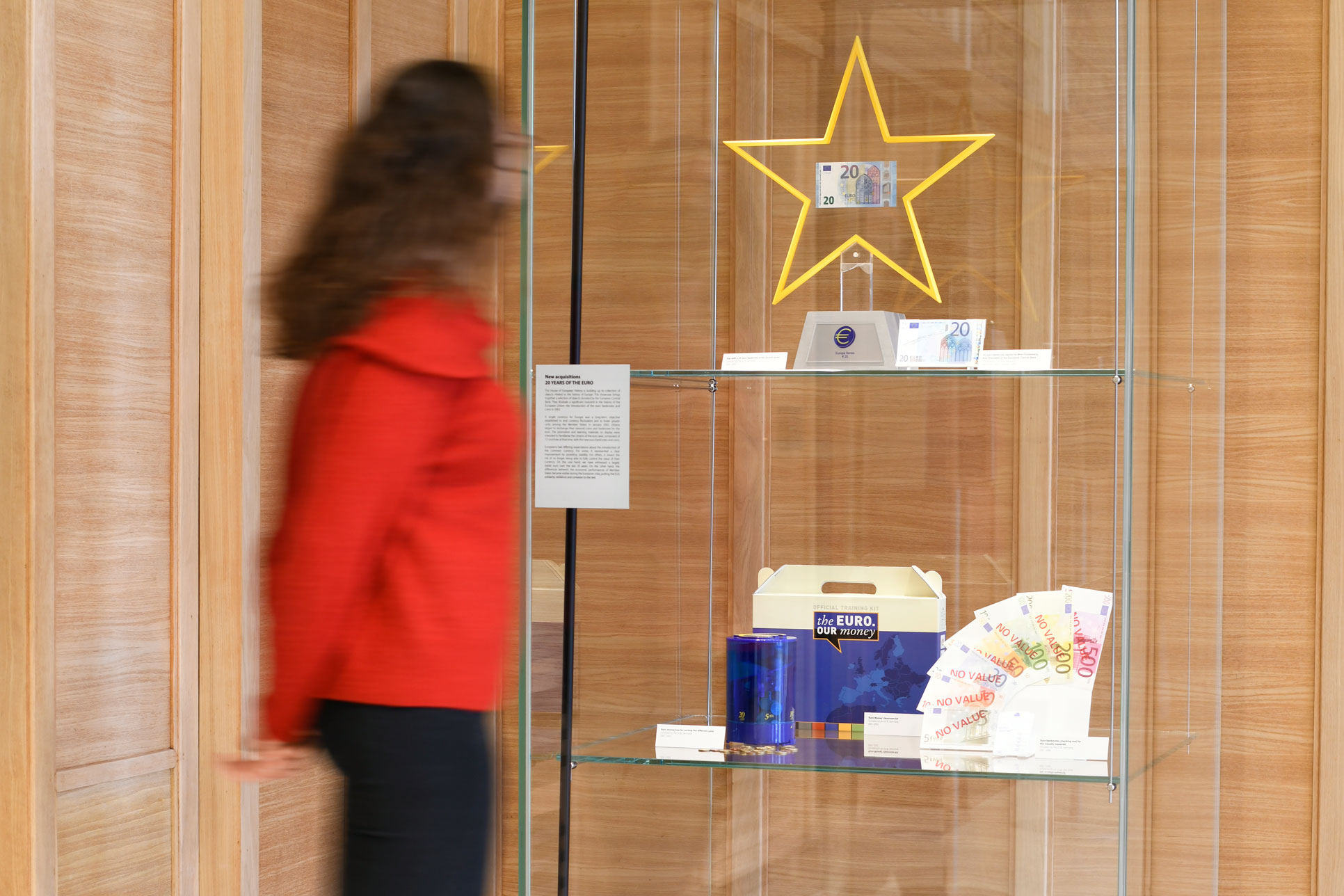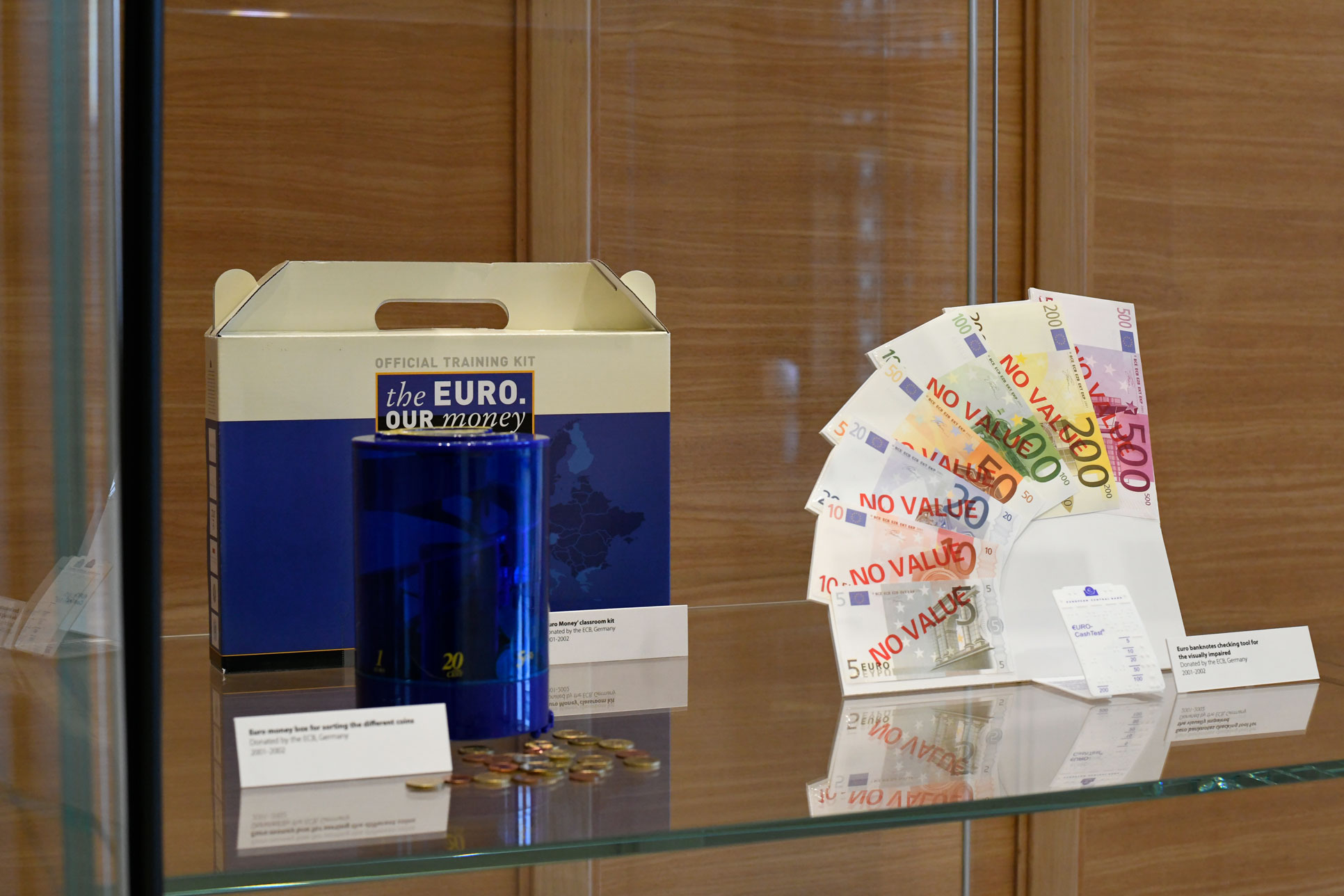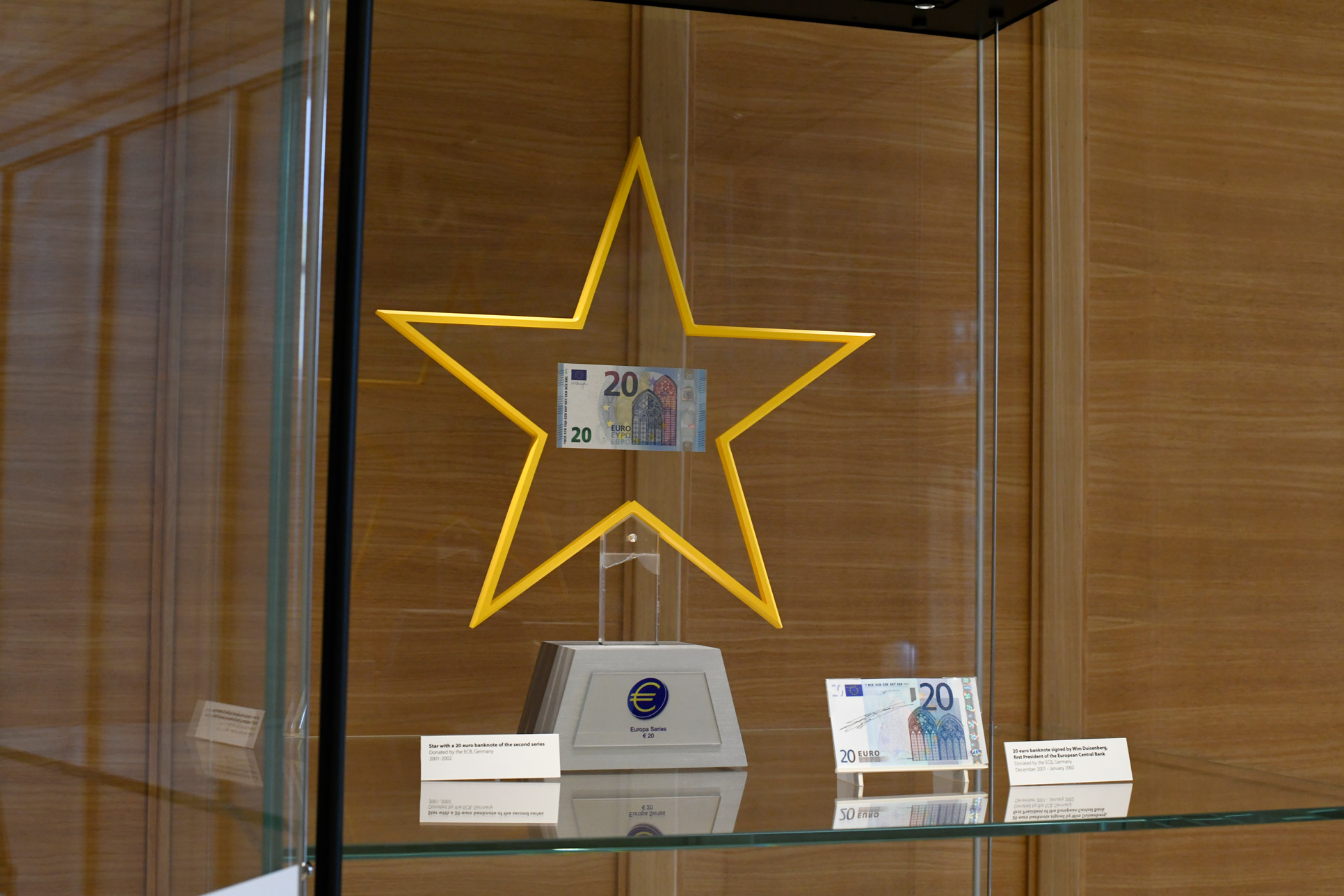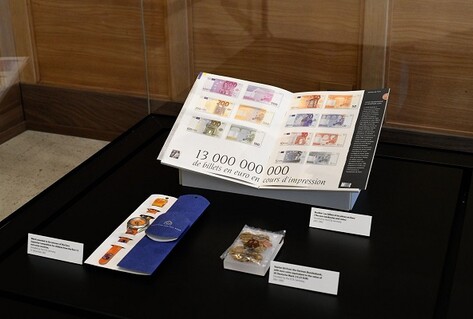The introduction of the euro was a significant moment in the history of the European Union. The House of European History carried out an ongoing collecting action to document this, working with the European Central Bank (ECB), national and EU institutions, and private collectors. The objects acquired reflect the biggest cash changeover in history, which impacted the daily lives of millions of citizens in 12 European Union Member States
Europeans had differing expectations about the introduction of the common currency. For some, it represented a clear improvement by providing stability. For others, it meant the risk of no longer being able to fully control the value of their currency. On the one hand, we have witnessed a largely stable euro over the last two decades. On the other hand, the differences between the economic performances of Member States became visible during the Eurozone crisis, putting the EU’s solidarity, resilience and cohesion to the test.
Objects collected include promotional and learning materials, which were intended to help citizens of the euro zone familiarise themselves with the new currency, as well as bundles of destroyed notes of former currencies, commemorative coins and proposals from design competitions.
A selection of the ECB objects were put on display in the Fables Room of the museum for the 20th anniversary of the euro’s physical circulation, whilst other others are on display on the 5th floor “Milestones of European Integration” section.




